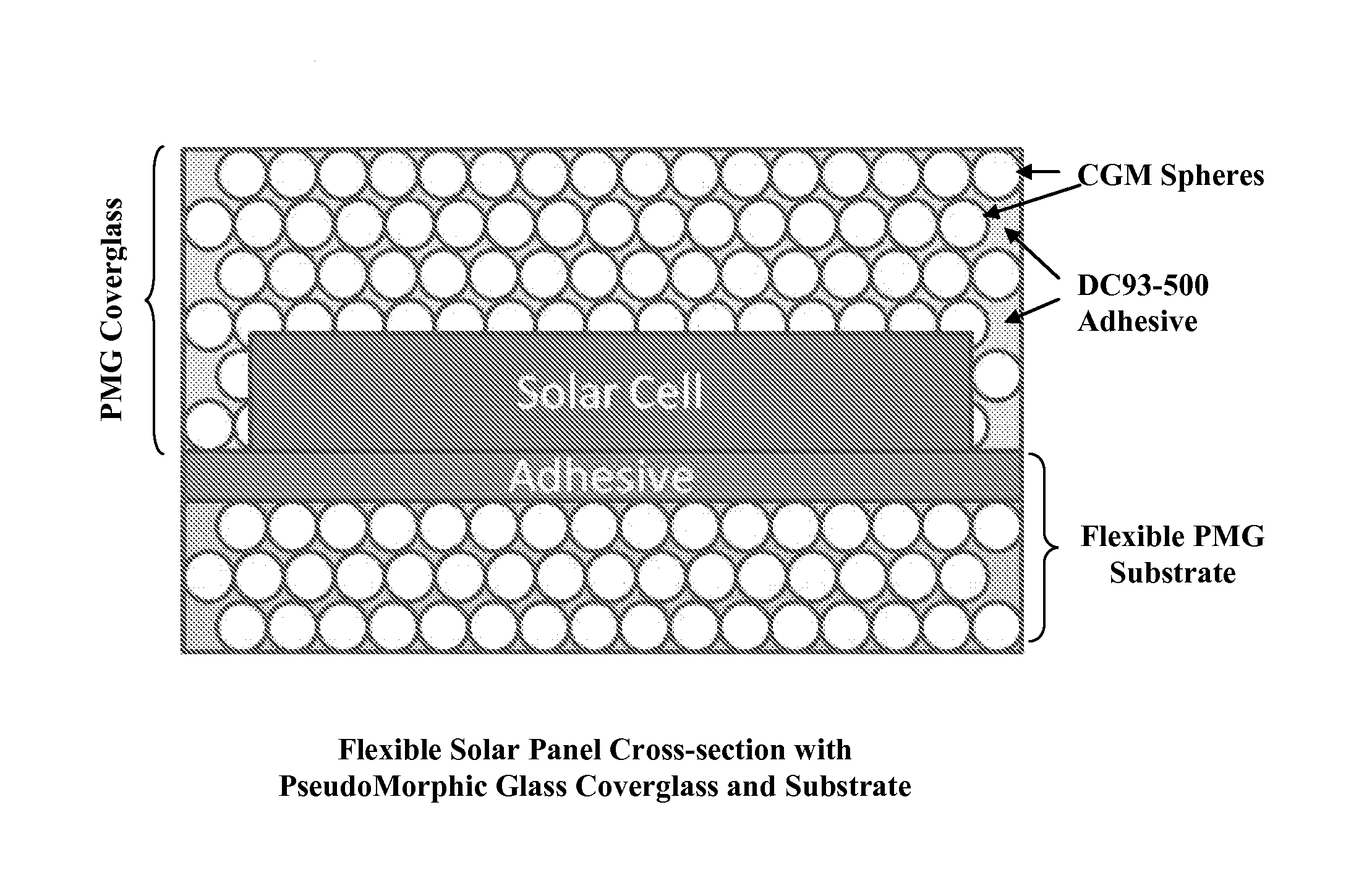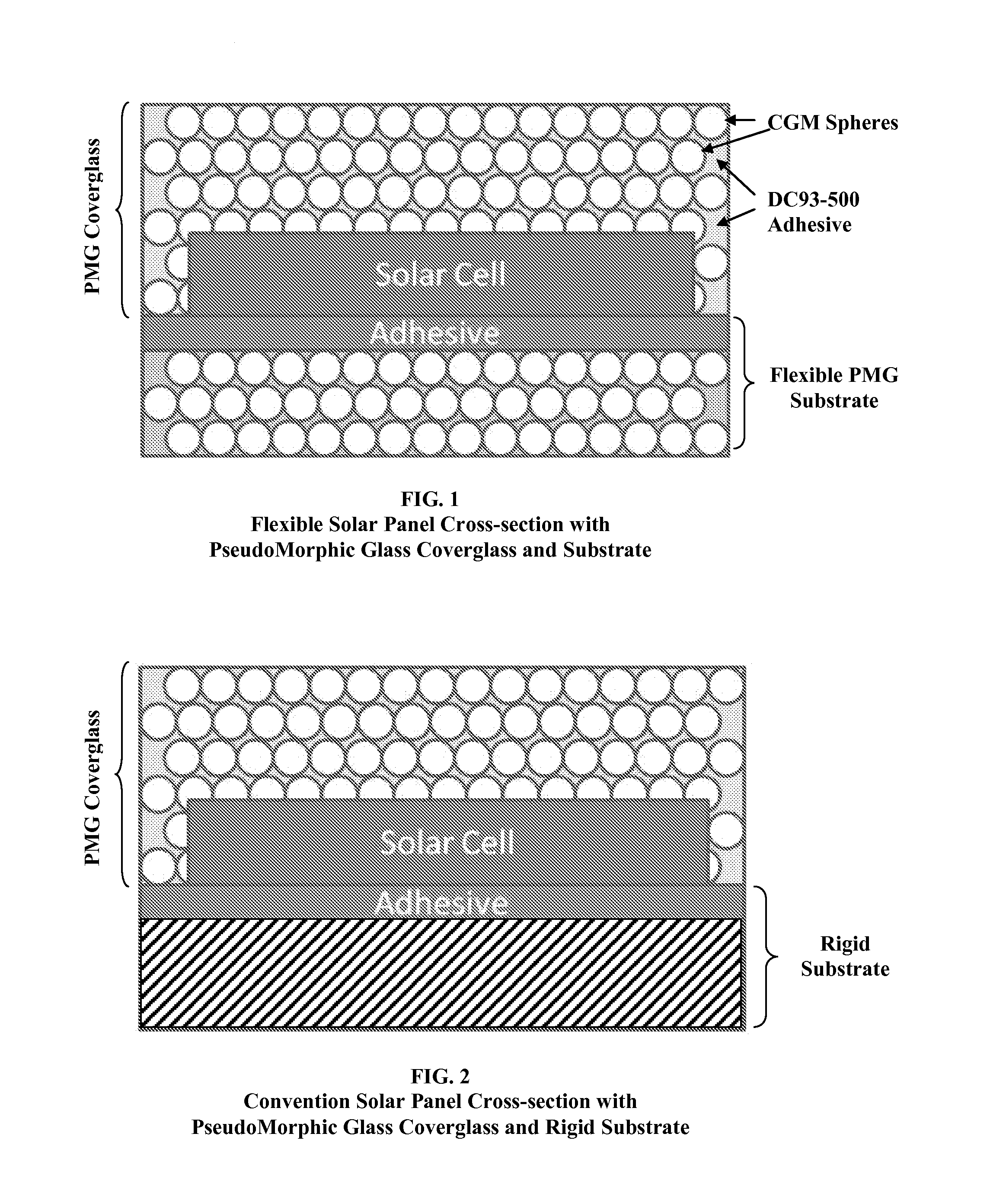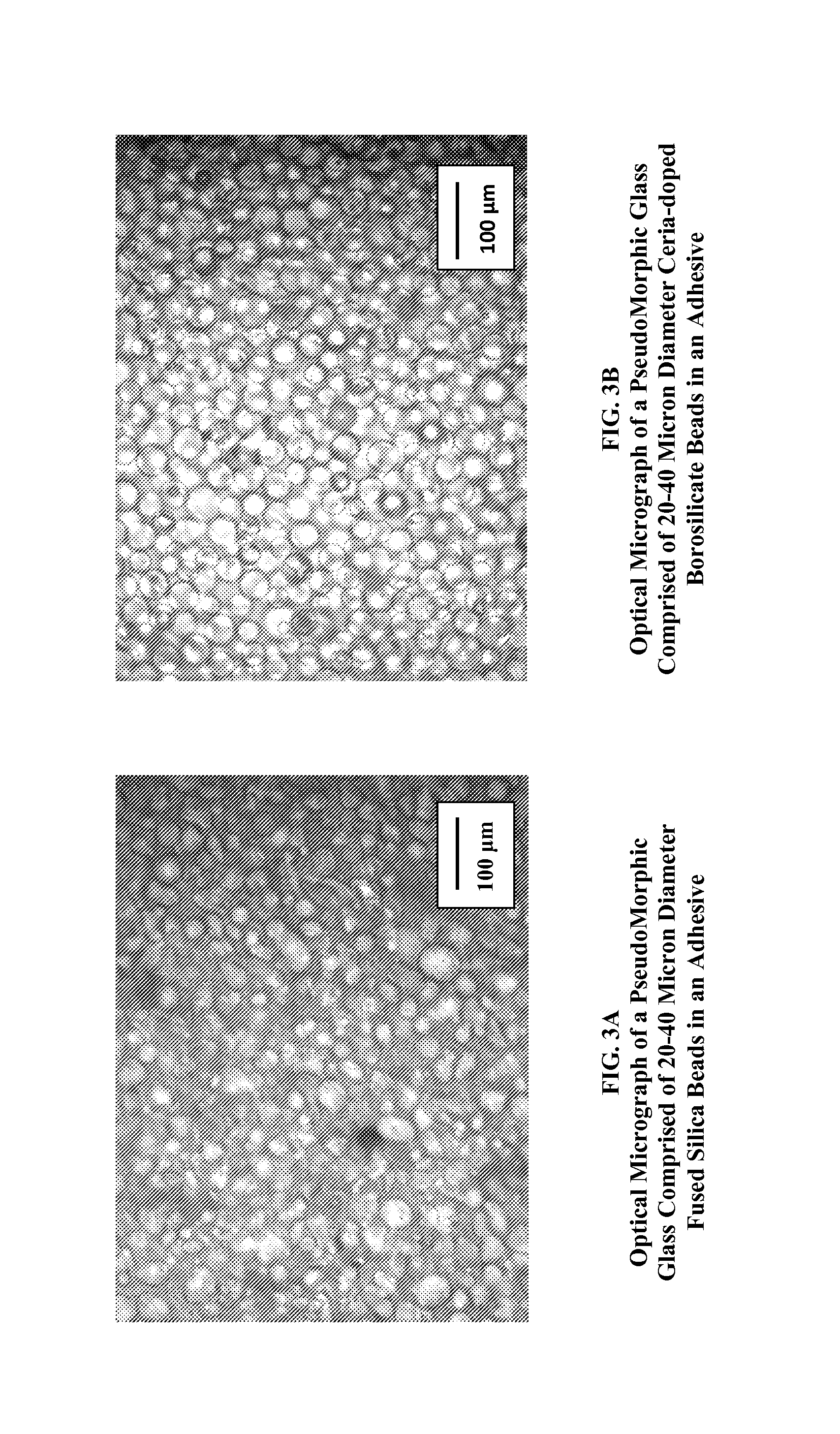Pseudomorphic glass for space solar cells
a solar array and polymorphic glass technology, applied in the field of spacecraft solar array coverglass materials, can solve the problems of negating the mass and flexibility opportunities available, fragile imm devices that fail, and no space environment has the needed spectral transmisivity and environmental stability, etc., to achieve enhanced uv protection, broadened spectral transmission bandwidth, and enhanced uv protection
- Summary
- Abstract
- Description
- Claims
- Application Information
AI Technical Summary
Benefits of technology
Problems solved by technology
Method used
Image
Examples
Embodiment Construction
[0023]PseudoMorphic Glass (PMG) uses conventional solar array materials (coverglasses and adhesives) but in a novel hybrid format that leverages the favorable properties of each. PMG consists of small diameter spheres of traditional coverglass materials, such as ceria-doped borosilicate glass and / or fused silica, imbedded in a matrix of either coverglass adhesives, such as DC93-500, a clear silicon adhesive by Dow Corning, or substrate replacement materials, such as Kapton. In this hybrid configuration, the matrix provides the mechanical integrity, and the glass spheres provide the primary radiation shielding. FIG. 1 shows a cross-section of a flexible solar panel blanket design incorporating PMG coverglass on the top as well as PMG for the substrate. In addition, PMG could be incorporated in conventional rigid panel designs, as shown in FIG. 2, wherein the PMG replaces the conventional coverglass.
[0024]FIG. 3A shows an optical micrograph of a PMG with 20-40 micron diameter fused si...
PUM
| Property | Measurement | Unit |
|---|---|---|
| diameters | aaaaa | aaaaa |
| thickness | aaaaa | aaaaa |
| mass | aaaaa | aaaaa |
Abstract
Description
Claims
Application Information
 Login to View More
Login to View More - R&D
- Intellectual Property
- Life Sciences
- Materials
- Tech Scout
- Unparalleled Data Quality
- Higher Quality Content
- 60% Fewer Hallucinations
Browse by: Latest US Patents, China's latest patents, Technical Efficacy Thesaurus, Application Domain, Technology Topic, Popular Technical Reports.
© 2025 PatSnap. All rights reserved.Legal|Privacy policy|Modern Slavery Act Transparency Statement|Sitemap|About US| Contact US: help@patsnap.com



